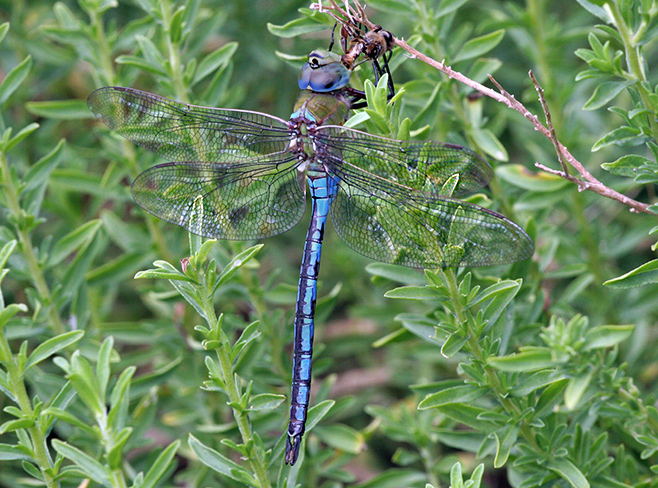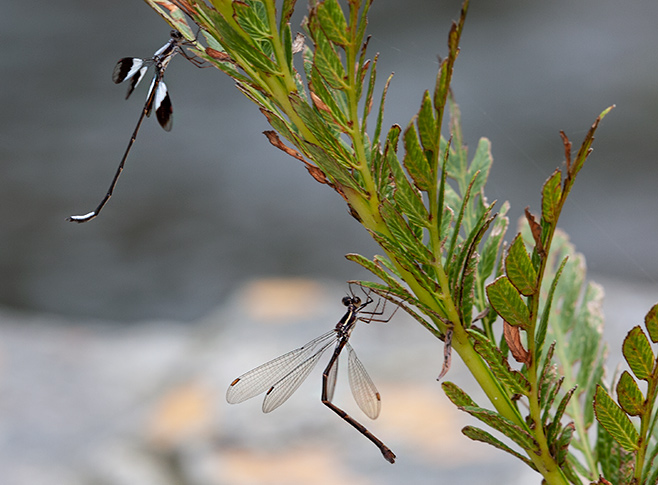|
Order: Odonata (damselflies and dragonflies)
Life
> Eukaryotes >
Opisthokonta >
Metazoa (animals) > Bilateria > Ecdysozoa
> Panarthropoda > Tritocerebra > Phylum:
Arthopoda > Mandibulata >
Atelocerata > Panhexapoda >
Hexapoda
> Insecta (insects) > Dicondyla > Pterygota >
Metapterygota > Holodonata
 |
|
Dragonfly: Anax imperator (Blue emperor) eating Honeybee it had caught; Kirstenbosch National Botanical Gardens, Cape Town. [photo
Hamish Robertson] |
 |
|
Damselflies: Male (top) and female (bottom) Chlorolestes umbratus, next to stream in forest on the Outeniqua Hiking Trail near Knysna, Western Cape. [photo Hamish Robertson] |
There are two suborders of Odonata, the Zygoptera (damselflies) and the
Anisoptera (dragonflies). Damselflies fold their wings over the body when at rest, have
forewings and hindwings that are equal in size to one another and have aquatic predatory
nymphs that breath through external gills sticking out of the end of the abdomen.
Dragonflies, on the other hand, keep their wings out at an angle of 90 degrees to the body
when at rest, have hindwings that are larger and differently shaped to the forewings, and
have aquatic predatory nymphs that breath through a network of tracheae lining the rectum.
The peculiar mating behaviour of dragonflies and damelflies is described in Skaife
(1979). The male transfers sperm to an organ at the base of his second abdominal segment.
While in flight he uses pincer-like claspers at the end of the abdomen to grab the female
at the neck. They fly in tandem with the male in front and then the female bends her
abdomen forward and takes up the sperm from the males special organ on the second
abdominal segment.
In species of Orthetrum dragonflies, the female after mating, lays eggs in
flight by dipping the tip of her abdomen repeatedly into the water, each time washing her
oval white eggs off the tip. The eggs rest in the mud at the bottom and ultimately hatch
into predatory bottom-dwelling nymphs. These nymphs breath through a network of tracheae
in the rectum and they have special musculature for circulating water through the rectum
which can also help in propulsion if the water is squirted out quickly.
At the end of its development, the nymph crawls out of the water, with its claws
fastens itself to an object such as the stem of a plant and then the skin splits along the
dorsal surface and the adult slowly emerges.
Further Reading
Links
| 